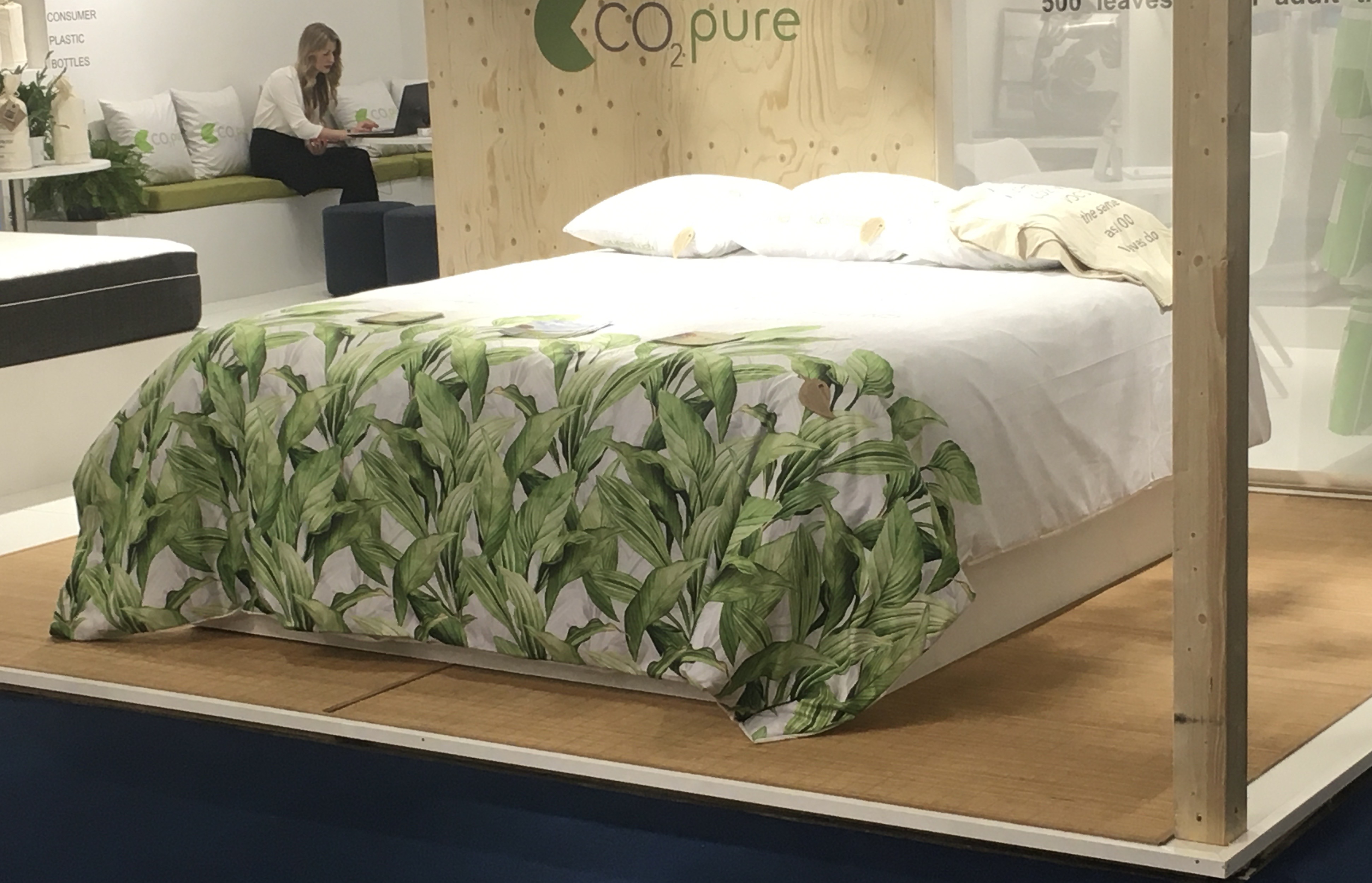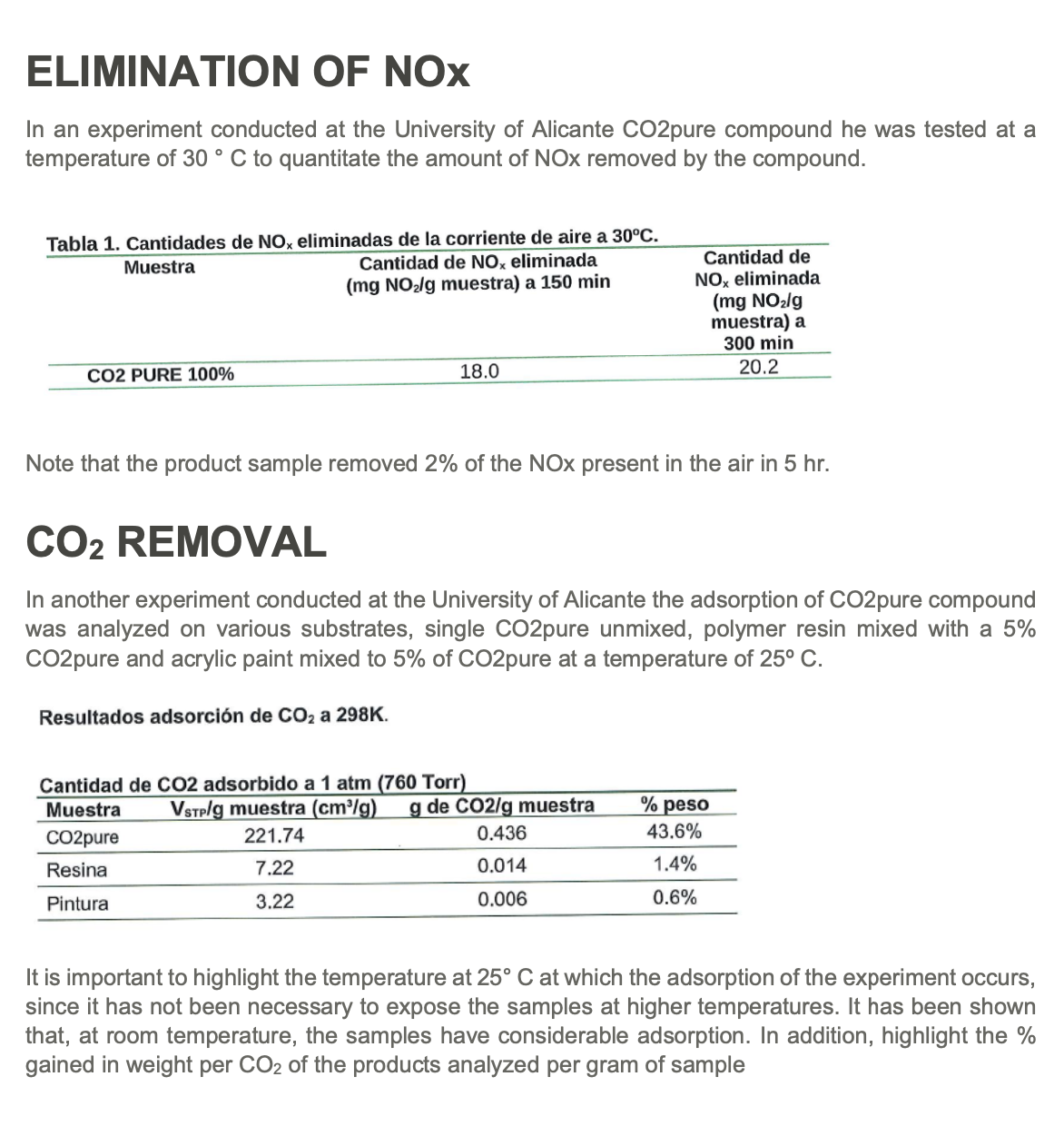
+4179 619 95 78
Die Bettdecke
Bettdecke Primlab Co2pure

What is it?
CO2pure is a 100% natural mineral compound, patented and produced within the EU, based on metal oxides such as MgO, CaO, FeO, Al2O3, SiO2, TiO2, and structures microporous, with the property of mineralize the main greenhouse gas, such as (CO2
and NOx) and reduce volatile organic compounds (VOCs). This product is used as an additive in the process of manufacture of paint, rubber, textiles, lacquers, celluloses, polymers 3D, roads, construction, 3D printing and generally for all types of coatings.
How does it work
The product has several phases of action catalysis (adsorption, dissociation and diffusion), photocatalysis, carbonation and nitrification (hereinafter briefly detailed). The following parameters, temperature, suitable pH, atmospheric gas concentration, atmospheric pressure, the product reacts to a speed or other, being very complex its determination.
Adsorption is a process whereby atoms, ions or molecules of gases, liquids or dissolved solids are trapped or retained on a surface. Dissociation is the process by which the molecules are separated into smaller molecules, ions or free radicals. Diffusion is a physical process, in which particle materials, are introduced into a medium in which they were initially absent, increasing the entropy of the whole system consisting of diffused particles or solute and the medium where diffuse or dissolve, producing ion exchange.
Photocatalysis acts by UV photoreaction accelerating in the presence of a catalyst, the most used TiO2, by the oxidation process, eliminating common contaminants such as NOx, SOx and VOC from the environment. Once the adsorbed contaminant is oxidized in two steps to an inert compound, nitrates (NO3-).
There are several products on the market with TiO2, as in the paintings, but carry a % of TiO2 in them for whitening, self-cleaning and reduction of NOx, but in the process of elimination that generate CO2 and H2O. Simultaneous photodegradation of VOCs with TiO2 and metal oxides existing in our formulation eliminate this CO2 generated by the oxidizing reagents.
Metal oxides such as titanium oxides, zinc, iron and silica having these characteristics, follow similar primary photocatalytic processes like as light absorption, inducing a process of charge separation with the formation of positive holes that oxidize organic substrates, as volatile organic compounds.
In the process, a metal oxide activated by UV light, visible light or a combination of both, and the electrons photoexcited are promoted from the valence band to the conduction band, forming an electron pair/hole (e-/h+). The photogenerated pair (e-/h+) can reduce and/or oxidize a compound adsorbed on the surface of the photocatalyst. The photocatalytic activity of the metal oxide comes from two sources: (i) generation of OH radicals by oxidation of anions OH-, (ii) generation O2- radicals by the reduction of O2. Both radicals as anions may react with the contaminants to degrade or transform them into less harmful by-products. Our composition attracts, to the surface, the ionic charges of the compounds present in the air.
Our formulation contains microporous structures elements that regulate with high thermal and chemical stability, making the process of adsorption and desorption decomposing of VOCs by its catalytic activity and ion exchange. This process makes CO2pure a unique product because it works with sunlight, visible or both and without the presence of light.
Mineral carbonation refers to the fixation of CO2 by using alkali and alkaline earth oxides such as magnesium oxide (MgO), calcium oxide (CaO) and ferrous oxide (FeO). Chemical reactions between these materials and the CO2 produced compounds like magnesium carbonate (MgCO3), calcium carbonate (CaCO3) and ferrous carbonate (FeCO3).
Nitrification is the biological oxidation of ammonium (NH4+) or ammonia (NH3+) atmospheric oxygen to form nitrite (NO2-), followed by oxidation of these nitrites into nitrates (NO3-), with atmospheric moisture. This process is carried out especially by nitrifying bacteria, specially from the gender nitrobacter found ubiquitously in the atmosphere to remove NOx.
In this way, after adsorption, chemical reactions that transform toxic products into inert by-products and, through environmental forces, are released from the substrate to the soil.
